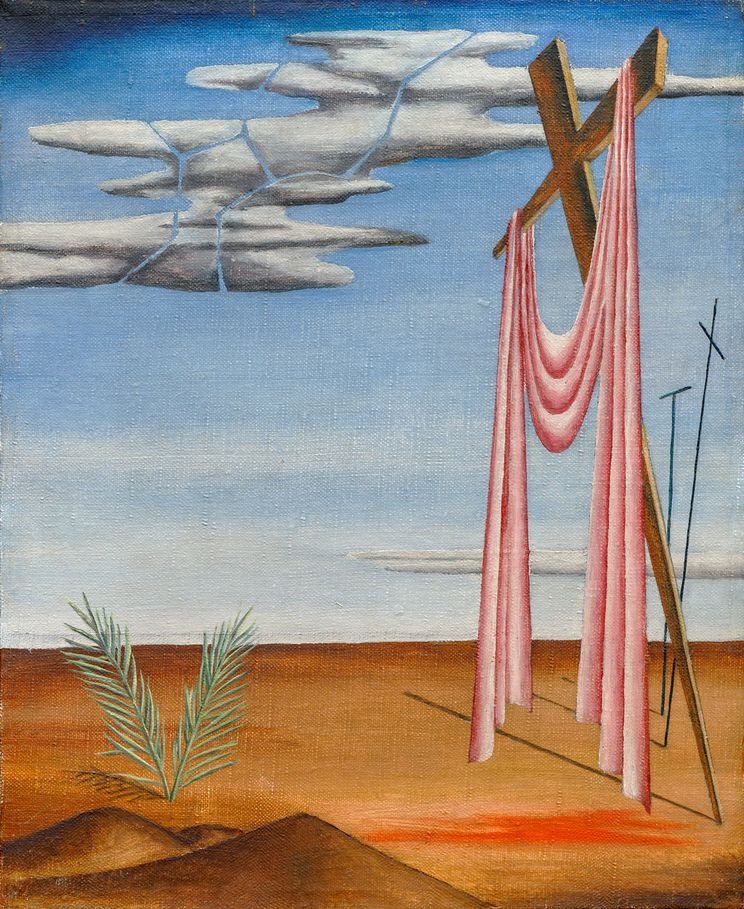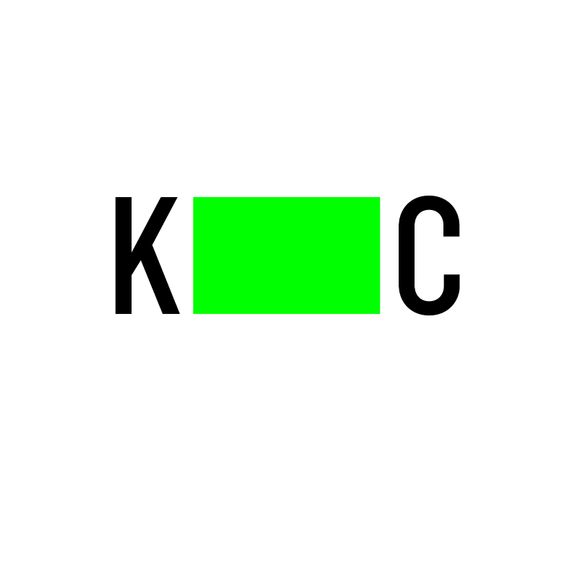
oil on canvas
circa 1948
37 × 31 cm
frame
This rare work of unique narrative value brings us closer to the fragility of František Muzika’s artistic expression, sensory perception of the world and reaction to crucial historical moments. During wartime, the overwhelming majority of Czechoslovak avant-garde artists were merely surviving on the fringes of legal existence, relegated to the space of unofficial, forbidden art. However, many maintained the continuity of modern artwork at the cost of various sanctions and the threat of military service. At the beginning of the war, Muzika resorted mainly to screenwriting, which offered him sustenance and a way of self-realisation. After 1946, he was appointed a teacher at the Academy of Arts, Architecture and Design in Prague. He decided to continue in his paintings despite the new regime and to confront it through imaginative art. Mythological themes began to appear in his work as an allegory to an absurd reality or a desire to return to values and stories from ancient history. The presented, very emotional painting is interesting in terms of content and form. It deviates from Muzika’s post-war work at the time and rather follows on from his earlier cycles on Calvary. It seems as if he was looking for a precise expression of his situation when he was not allowed to present himself publically and his upcoming solo exhibition was banned. Muzika, moving on the edge of allegorical symbolism and mastering surrealist morphology, created an artwork that summed up his feelings of oppression. According to its first owner, the painter’s close friend Professor František Dvořák, Muzika himself entitled the painting February 1948. The scene takes place in a Chirico-style landscape, divided by the horizon into two parts: the ochre earth and the azure blue sky. There are several characteristic motifs in the painting which, according to the artist, symbolise what was to come for the Czechoslovak nation in the following decades: wired clouds, a thin elongated cross with Christ’s robe, and palm branches. For political reasons, Muzika did not want to present himself with this intimate artwork, so it was not published nor exhibited; the reverse even lacks a significant artist’s inventory number. Assessed during consultations by PhDr. R. Michalová, Ph.D., and prof. J. Zemina. The expertise of PhDr. K. Srp is attached.







